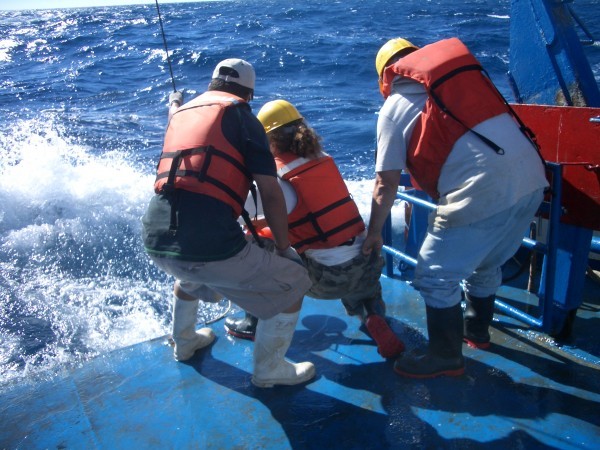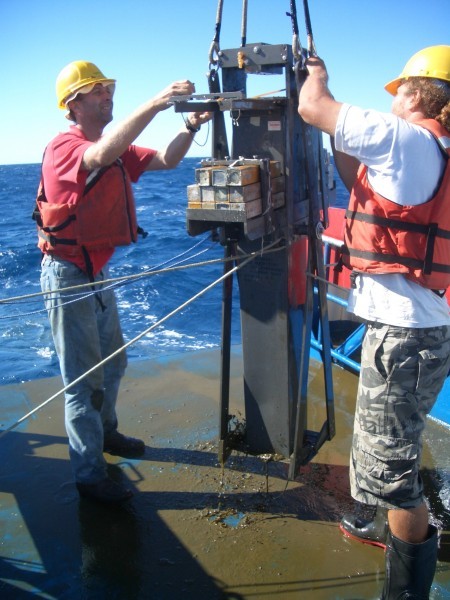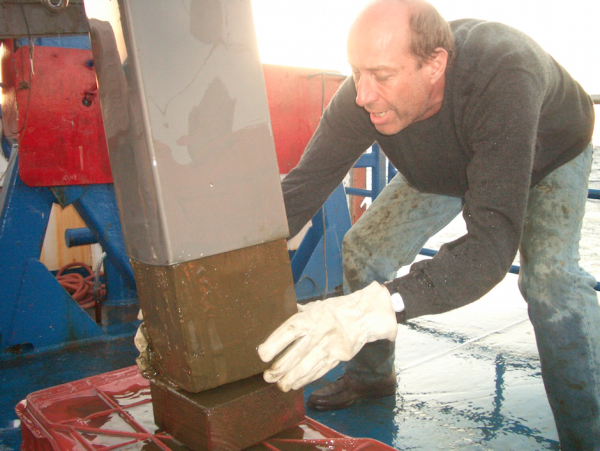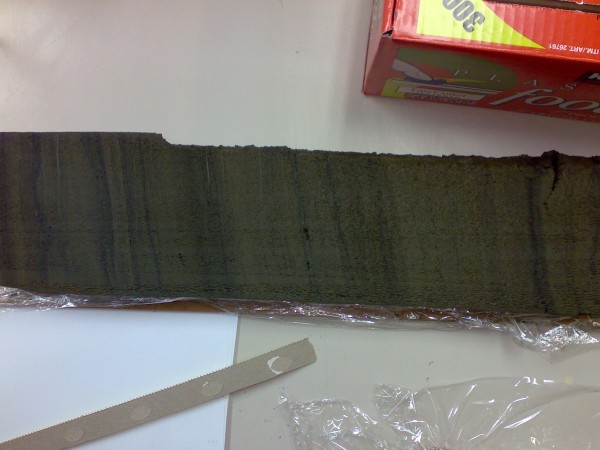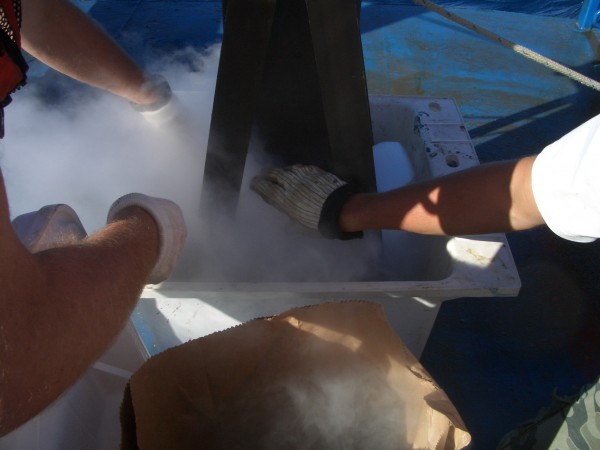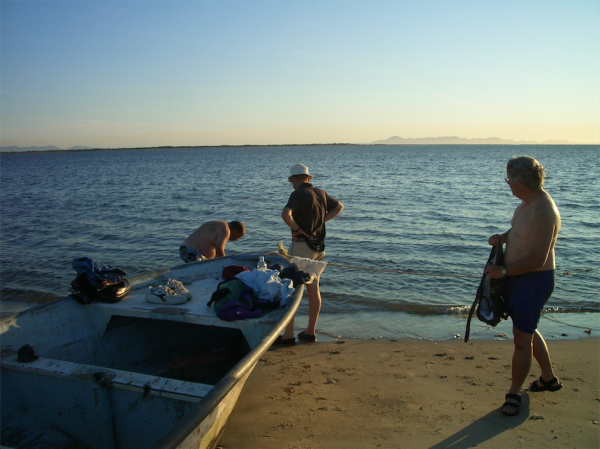Geochemists Alexander van Geen and Jacob Mey helped coauthor a recent paper in the leading journal Science showing that warming climate in the future may not degrade oxygen supplies in some parts of the oceans as previously thought.
As surface waters warm, they hold less oxygen dissolved from the air; they also become less dense and thus less likely to mix with the colder water beneath. Both processes cut into oxygen supplies of the lower waters, where bacteria are constantly devouring the slowly sinking remains of surface algae, in the process using up the available oxygen. Without enough new oxygen input, the lower layer can eventually turn into a largely oxygen-free dead zone, where most marine creatures cannot survive. This is already being observed in many places around the world.
In 2007, van Geen, a research professor at Lamont-Doherty Earth Observatory, and Mey, a Lamont adjunct researcher based at Brooklyn’s Kingsborough Community College, took sediment cores off southern California and northern Mexico, and these tell a different story. Along with lead author Curtis Deutsch of the University of Washington and coauthors at other institutions, they showed that oxygen was actually increasing along these coasts during much of the 20th century, despite warming trends. The reason, the authors conclude, is that at least in this region, warming has another effect: it weakens the trade winds that stir nutrients from deeper waters toward the surface. These nutrients fuel the growth of algae. Fewer nutrients being stirred up means fewer algae, which means less food dropping down to the algae-eating bacteria below, which means less oxygen is used up there. The research is described in news releases from the University of South Carolina and the University of Washington.
Below, some of Mey’s photos of how the cores were retrieved and processed.

